Differences Between Senate and House of Representatives in Malaysia
With Indonesia having canonical the relocation of their capital to Nusantara, Borneo, it's only natural that they'd commission a sleek, new presidential palace to get with information technology. And information technologyissleek indeed:

In example you're wondering, yes, that is a Garuda bird. Epitome from: CNA/Instagram/Ridwan Kamil
Although we've got the edge over Indonesia in a few other things (like football rankings, for instance), we gotta admit that the winning pattern for their new presidential palace is pretty impressive, and it does kinda make the states a little bit jealous.
Which kinda got us thinking: nosotros've got some pretty fancy national buildings also, so how exercise ours compare to Indonesia's? We decided to take a closer wait at the design of some of these, and we learned some interesting things. Let's start with our legislative hubs…
1) Parliament
What'south pretty cool about Republic of indonesia's parliament complex, the MPR/DPR/DPD Building (named and then because it houses 3 different legislative bodies), is its futuristic exterior, modeled subsequently the wings of a Garuda. Information technology likewise kinda reminds us of the Galactic Senate edifice from Star Wars. I mean, just look at information technology; information technology looks a similar a friggin' spaceship.
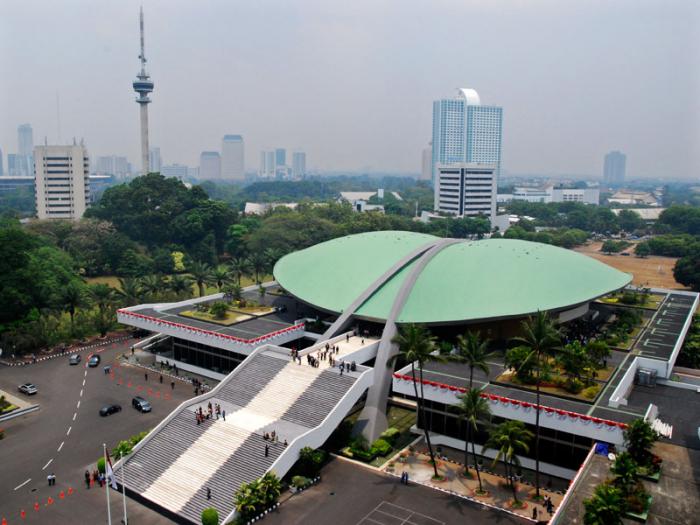
Indonesia's parliament complex, the MPR/DPR/DPD Edifice in Jakarta. Epitome from: Wikimapia
Designed by Soejoedi Wirjoatmodjo and commissioned by their first President Sukarno in 1965, its construction faced several hiccups (including the 30 September Movement), but the master edifice was finally completed in 1968, with other parts of the building completed in stages over the course of the next few decades.
Interestingly, the six buildings in the complex were given Sanskrit names due to Sukarno's Javanese influence, which proved problematic equally even MPs would mispronounce them sometimes (try saying Samania Sasanagraha really fast 5 times) . Just in 1998, educatee protestors took it over, a revolution toppled Suharto'south government, and all the buildings were renamed with more Indonesian-friendly names (such as Nusantara, Nusantara I, Nusantara 2, Nusantara 3… you get the thought).
The interior of its House of Representatives is no less impressive: housing 575 members, its blueprint is reminiscent of the WWII-era German Reichstag in Berlin (we merely know this because we played Telephone call of Duty: Globe at State of war). This could be due to its European (Dutch) colonial influence; in fact, Indonesia'due south legislature, the Dewan Perwakilan Rakyat (DPR), began every bit something known every bit a Volksraad(Dutch for 'People's Council'.
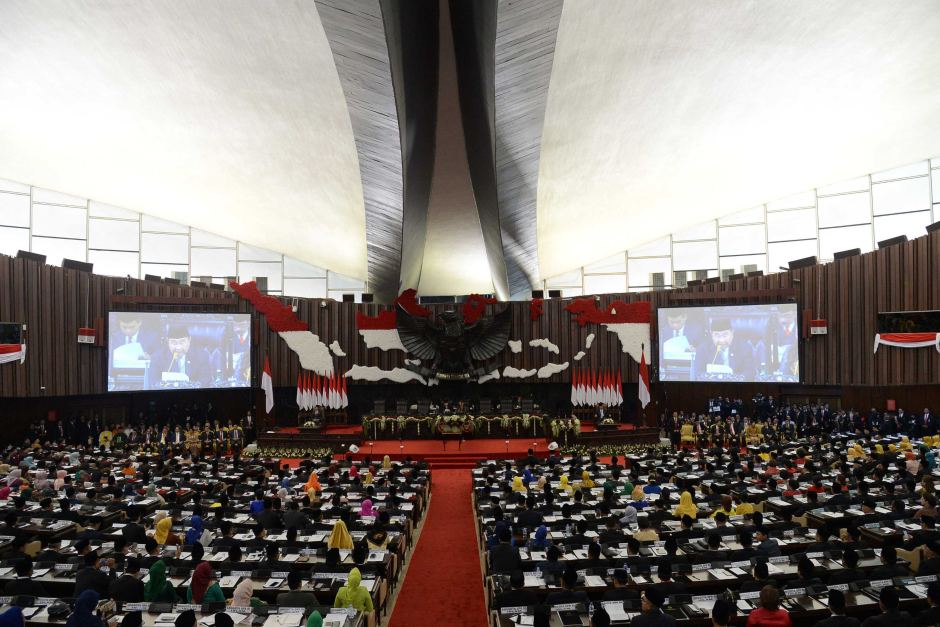
Republic of indonesia's Parliament. Image from: AFP/Andri Nurdriansyah
On the other hand, Malaysia'south Parliament building in KL, appears to take been built with utility in listen, rather than style. At a glance, the immediate obvious difference between Malaysia and Republic of indonesia's parliament buildings is that ours was built to be tall, while Republic of indonesia'southward was built to be wide. And at that place's a reason for this: Malaysia's Parliament's outside blueprint fits in with the architectural principle of sustainable building for tropical climates:
"In hot-humid climates, this depth should exist limited in order to promote air circulation, and the rooms should be arranged in a row and provided with large openings on the reverse exterior walls." – Sustainable Building Design for Tropical Climates
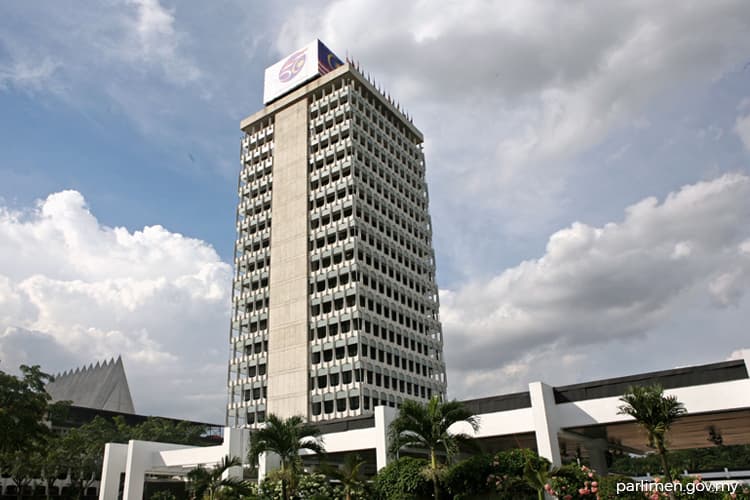
"Oiii apasal tak bukak aircond?!" Epitome from: Bernama/The Edge
(On another annotation, it's quite ironic that KL'southward KTM railway station was built to withstand snowfall.)
Officiated in 1963, the Parliament building was built using over a million bricks, and makes up for its relatively generic, indigestible design with diverse other facilities, including a fancy multipurpose sports hall, banquet hall, and even a Deer Park. Oh, and fun fact: the building's foundation rock contains a time sheathing containing diverse trinkets and memorabilia from the time.
Another deviation from Indonesia's would be the layout of the respective houses of representatives: while Indonesia's has seats all lined upwardly directly facing the Speaker'south seat, Malaysia'south has 222 parliamentary seats bundled in a circular mode with the Speaker's seat as the central fixture, like to the U.s.a. Business firm of Representatives.
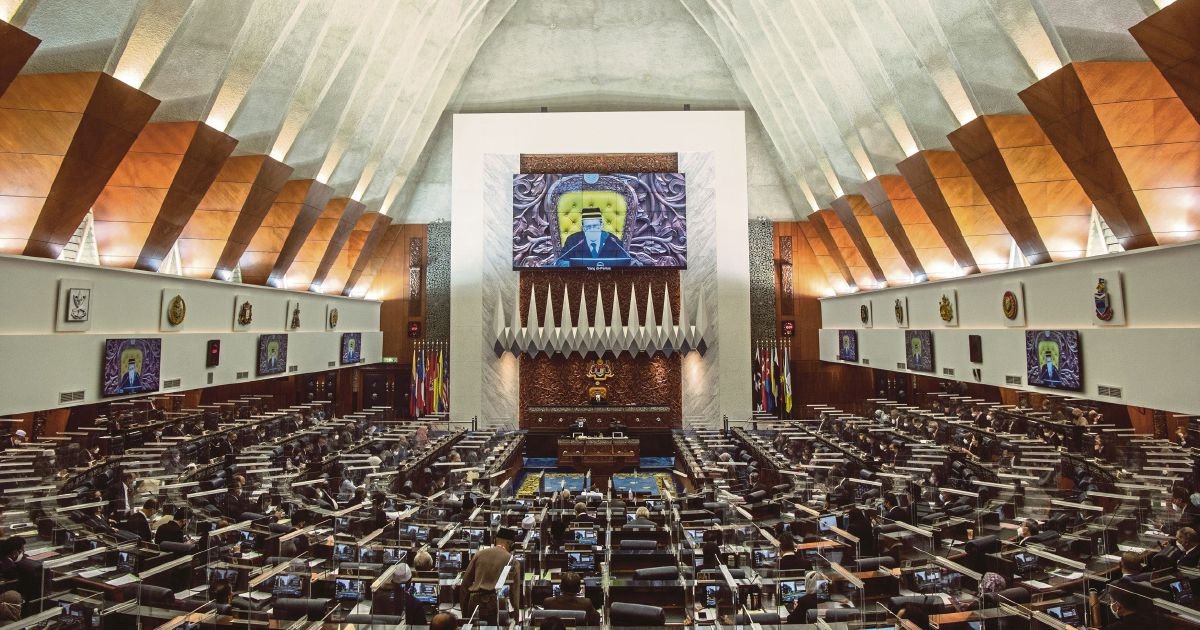
Malaysia'south Dewan Rakyat. Image from: Bernama/NST
Winner: For fashion, Indonesia; for practicality, Malaysia
2) Palace
Republic of indonesia seems to accept a fascination with presidential palaces; they have six. But we'll only be focusing on the one currently used every bit the official Presidential Palace, the Merdeka Palace.
What'southward absurd about our respective palaces is that they evidence the crucial differences between our forms of government; every bit a republic, Republic of indonesia's Dutch-designed Merdeka Palace in Dki jakarta appears to have done abroad with the grandiosity of traditional monarchic architecture, favoring a more than muted, minimalist look akin to the US White House in Washington (the Americans are also a republic).
Built by the Dutch colonialists in 1879 equally the Paleis van de Gouverneur Generaal ("Palace of the Governor-General"), the Merdeka Palace is an upgrade to the original presidential palace, the Istana Negara (built 1796), which lies in the same compound. Both palaces take porticos supported by Corinthian and Doric pillars, typical of Dutch compages at the fourth dimension (buildings such every bit the White Firm in Washington, D.C. and Atatürk'south Mausoleum in Ankara, Turkey too have this feature).
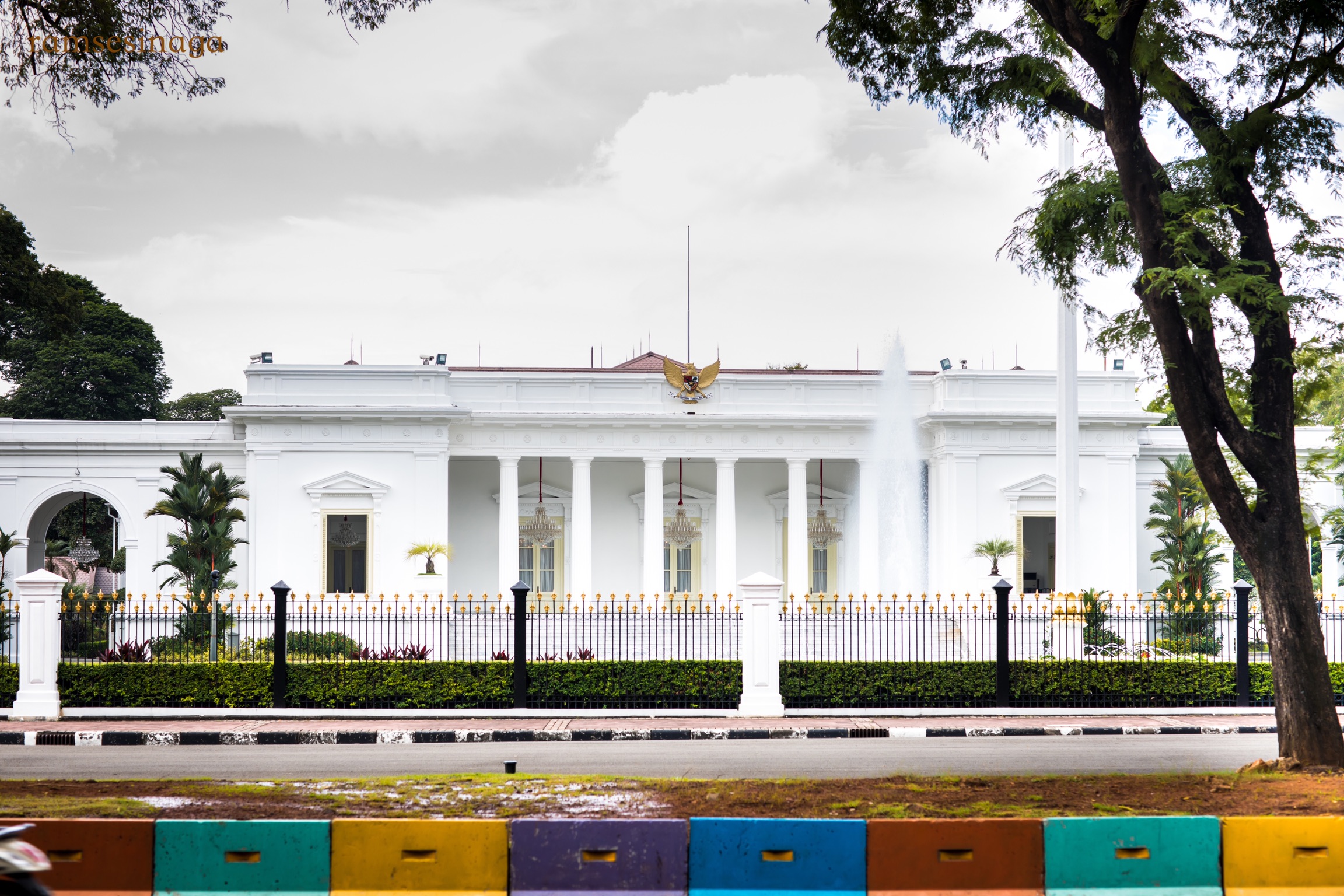
White House 2.0? Epitome from: Wikimedia Eatables
Of class, if the preliminary designs of the proposed new palace in Nusantara are any indication, the no-grandiosity principle may well be going out the window, because damn, the new one looks kaiju-level massive:
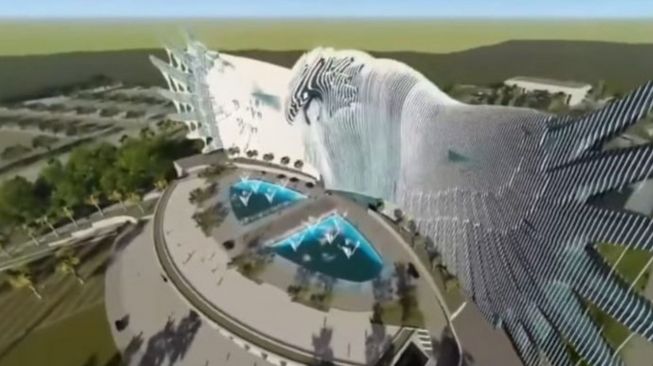
"ALL YOUR Base of operations ARE Vest TO US!" Prototype from: Coconuts Jakarta
Now, Malaysia's Istana Negara on Jalan Tuanku Abdul Halim looks more like a Male monarch's residence (which it is). Opened in 2011, information technology replaced the old Istana Negara located elsewhere in Kuala Lumpur (which now serves every bit the Royal Museum).
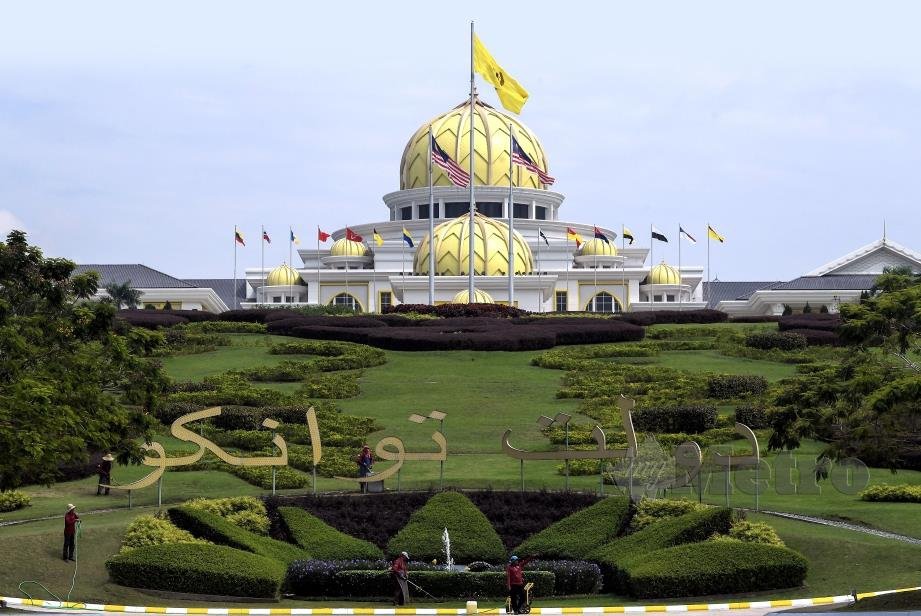
Istana Negara, Jalan Tuanku Abdul Halim, Kuala Lumpur. Image from: Harian Metro
The distinctive aureate domes are reflective of the Agong's condition as Head of State, as well as Malaysia's deep Islamic roots. And, as anyone driving past it on the manner to work volition take noticed, it's built on a hill, with an area encompassing 96.52 hectares (although only 28 hectares are used for the bodily palace complex, with the rest serves as a garden). The surrounding existing forest was also developed into a public garden on the request of the Agong.
It'southward also guarded round-the-clock by soldiers of the Agong's regiment, the Royal Malay Regiment, who basically simply stand nonetheless for the duration of their shift fix to sniff out threats, like to the Queen'due south Guard at Buckingham Palace. In fact, there'south even a Changing of the Guard ceremony at the palace which happens at 12 pm every day, as well as a larger version of that ceremony held monthly, so be sure to check those out next fourth dimension yous pay a visit:
Winner: For history, Indonesia; for architecture and tourism, Malaysia. But of course, that could change once Republic of indonesia's Nusantara palace is completed.
3) National monuments
At present, when we first saw Republic of indonesia's National Monument (Monas), we idea it was just another nationalistic pole monument, similar to Nelson'southward Cavalcade in London. But that changed when we constitute out its origin story.
Thought upwards by Sukarno himself, the building was designed as a symbol of, um, masculinity and femininity, to use the most polite terms. You'll know what we mean when you encounter information technology:
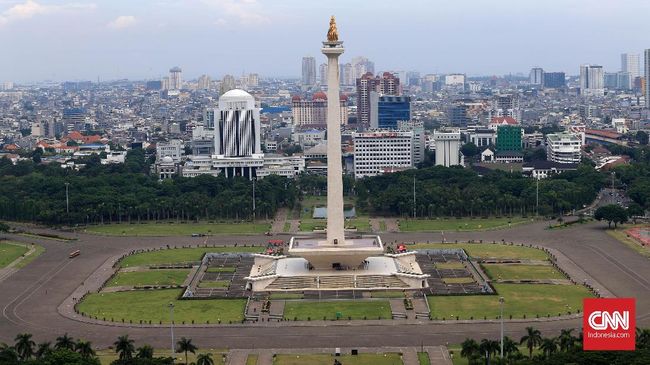
Indonesia's Monumen Nasional (Monas), Dki jakarta. Epitome from: CNN Indonesia/Safir Makki
And if you thought we were making that up, no we weren't; Friedrich Silaban, its architect, was told by Sukarno (of Javanese descent) to design it with the Hindu concepts of lingga(phallus) andyoni(vulva):
"It's actually not very local, considering it's derived from Hindu traditions of India, who take long influenced Java. I don't know exactly why they used it anyhow, because information technology'south really very Coffee-centric." – Setiadi Supandi aka Cung, biographer of Friedrich Silaban (translated from Bahasa Indonesia by Cilisos)
But that's not the merely controversy surrounding it; despite it being built as a symbol of their struggle to win independence, Indonesians were initially against its building, as its announcement was deemed too shortly after independence, especially during a time of economic incertitude.
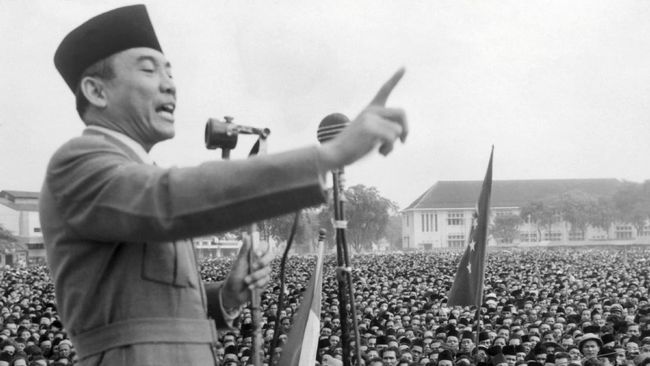
Oh Sukarno, you mad lad. Prototype from: Utusan
Now, for Malaysia's national monument, we're pretty sure anybody's familiar with its iconic blueprint. Our Tugu Negara is actually located a stone's throw away from Parliament, and is a more realistic depiction of an independence struggle; it's literally a statue of soldiers in combat and raising the Malaysian flag, with one soldier holding a wounded comrade. At their anxiety are a pile of bodies, symbolizing the poignant truth that our nation was congenital on the blood of the fallen:
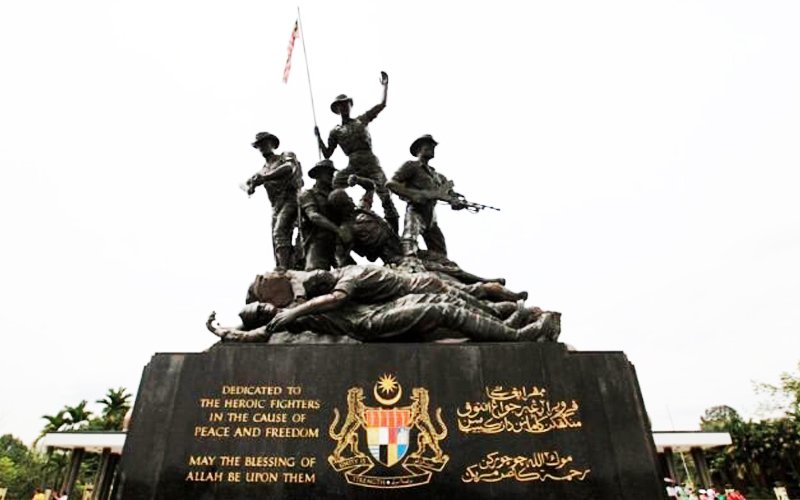
Tugu Negara, Jalan Parlimen, Kuala Lumpur. Paradigm from: FMT
Unveiled in 1966, the Tugu Negara was actually bombed by the communists in 1975, cos, well, no one likes a monument essentially built equally a symbol of victory over them. But the Tugu Negara has likewise received its off-white share of opposition from regular Malaysians, since Islam forbids idolatry (hence why you don't see whatever images of the Prophet or anyone else at mosques).
Although both monuments hold significance in their respective countries, they're both clearly very, very unlike. Nosotros judge it's just a affair of gustatory modality, only personally, nosotros're going with Malaysia's for this one (though admittedly, Republic of indonesia's monument'due south origin story is difficult to beat).
Winner: Malaysia's for craftmanship and emotive effect; Indonesia's for origin story
Both countries' buildings are pretty to look at, but also capture historical and political differences
Although we share a similar language and culture, Malaysia and Republic of indonesia went in very different directions post-obit colonization by the British and the Dutch, respectively. On the ane hand, you lot accept u.s., a constitutional monarchy with deep ties to Islam which exist to this day, and so you accept Indonesia, a secular republic who severed their ties to royalty a long time ago.
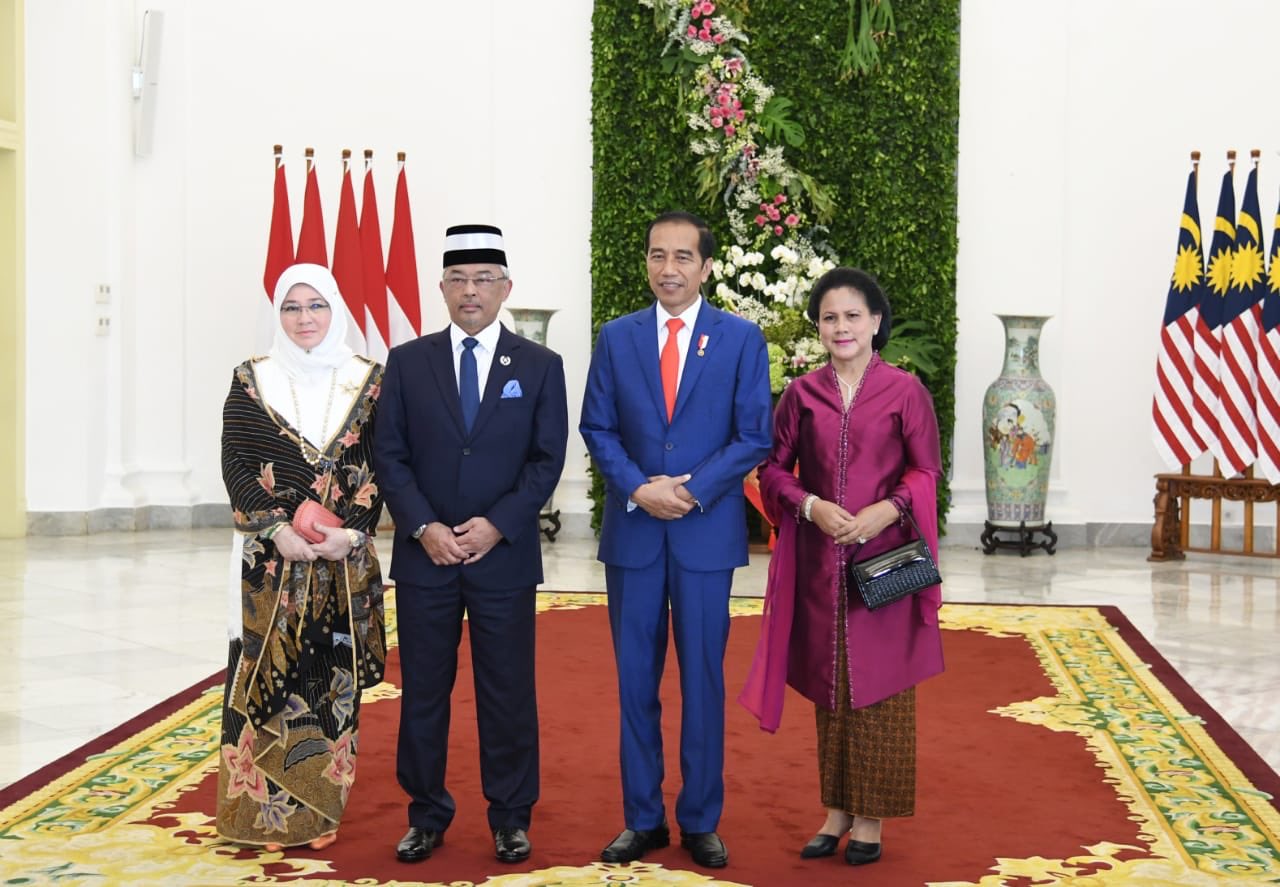
Like in many respects, different in others. Prototype from: Menteri Luar Negeri Republik Indonesia Twitter
And these differences are reflected in the way we build our buildings, each designed to accommodate the national ideologies of the current era. At the end of the day, no affair how you feel near the governments of past and present, these buildings are important equally they serve as part of our national identity, as well as a reminder of how nosotros came to be.

Source: https://cilisos.my/malaysia-vs-indonesia-who-has-nicer-national-buildings/
0 Response to "Differences Between Senate and House of Representatives in Malaysia"
Post a Comment